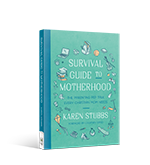
Sign Up for Updates
Connect
TOPICS
- Latest Blog
- Fiction
- Inspirational/Devotional
- Men's Christian Living
- Prophecy
- Women's Christian Living
- View All
ARCHIVES
Plan Before You Plant: How to Grow a Successful Family Garden
Posted on Oct 20, 2020 Topic : Men's Christian Living, Women's Christian Living
Posted by : Melissa K. Norris

A customized plan based on your family’s needs, space, and gardening zone is one of the often most overlooked but critical steps to a successful growing season and harvest. One of the biggest mistakes we made in our early years of homesteading, my husband and I both agree, is that we didn’t keep the best of records when we started out.
The small amount of planning done now will guide you throughout your entire year of gardening and ensure you’re raising food and crops your family will put to good use. Because, let’s face it—it doesn’t matter if we have a huge garden if it’s full of foods our family doesn’t like and we’re not eating.
Whether this is your first year or you’re a gardening veteran, planning will serve you well. We do this every winter as we gear up for the growing season.
No one garden is the same, nor should it be. Your garden will evolve and change every year, a living canvas for the gardener to erase his mistakes and hone his talent. You’ll find my planning very practical. I believe in planting what my family enjoys and eats the most (alas, I’ve not found a chocolate plant that will grow here—but raspberries are a close second) and can be preserved to stock our pantry for the off-season.
THE FIRST STEP TO CREATING A CUSTOMIZED GARDEN PLAN
No matter if you’ve been planting and preserving for years or this is your first year, start by going to your cupboards and freezers.
Look at your current pantry and freezer and take note of which foods you eat on a regular basis. Keep track of the meals and foods you’re consuming regularly. If you use a written meal plan, this is already done for you.
Do you have spaghetti, chili, or something with tomato sauce in it weekly? What frozen or canned vegetables are you using on a consistent basis? Don’t forget the spice and herb cupboard.
Document this, write it all down, and keep a record of what you’d use in an average month. Then multiply out for a year. Use the Food Needs for a Year Worksheet at the end of this chapter to help you do so. This step lets you know what and how much to plant for the current year’s gardens.
When I went through this process in my kitchen, I found in January that I had 18 jars of tomato sauce left. Our typical first large harvest of tomatoes (enough to make sauce) isn’t until August. I can use approximately two jars a month if I don’t want to purchase any from the store. This past year I tried a new type of tomatoes and didn’t grow as many paste tomato plants as I usually do. I made a note to go back to 20 plants of San Marzano Lungo 2.
With 27 jars of cucumber pickles left, at a jar a week until main harvest time, we have plenty (we generally don’t eat an entire quart of pickles in one week). This means having three hills (nine plants) of pickling cucumbers is the perfect amount for our current needs.
I go through this process with all my preserved foods, including dehydrated, canned, and frozen food.
Using this method, evaluate how much food you have left from last year’s garden or how much you need to feed your family for a year of each crop. Now it’s time to plan what crops and how much of them you’ll be planting for your family’s needs. It’s important to note: this will likely change every year.
One year I had 30 jars of salsa left over. I didn’t can any salsa that year; instead, I used up what we had. Some years I preserve a double amount of a crop and skip growing it the following year. Best practice is to use home-canned goods in 12 to 18 months.
It’s crucial that you go through your inventory each year and not run on autopilot. Right now, my son is hitting his teenage years (aka eating a lot more food). My daughter loves pickles (she didn’t use to). Over the years, we eat more of some things or less; and the beauty and point of growing your own food is that you can tailor your harvest to your exact needs.
***
Melissa K. Norris has created an easy worksheet to help you determine your family's yearly food needs. You can download it here. You can find this plus all the other charts, checklists, and worksheets you'll need to successfully plan your garden in her new book.

Read more in The Family Garden Planner by Melissa K. Norris

